LVT Flooring Cost Guide
Last updated 1st July, 2025
Luxury Vinyl Tile, or as it is better known, LVT, has become incredibly popular in the UK as an alternative to hardwood or stone flooring due to its durability and cost-effectiveness. In this guide, we’ll explain everything you need to know about LVT flooring, including how much it costs, information on installation and what to expect if you are trying to install it yourself.
LVT is appealing to homeowners for a few different reasons. Firstly, it boasts a really high level of durability, which makes it the ideal option for areas with high foot traffic. Next, its moisture resistance properties mean that it can be installed in kitchens and bathrooms.
Finally, LVTs are incredibly flexible, both in terms of design and installation, with extensive options in styles and installation methods available. In most cases, homeowners can expect to pay between £20 and £70 per m2, which includes both supply and fitting costs, depending on the type of LVT and the complexity of the job.

Table of Contents
How Much Does LVT Flooring Cost?
The cost of LVT flooring can vary quite dramatically based on a few different factors. Firstly, the supply costs stand at around £10 and £40 per m2, while the cost of professional LVT installation will generally fall between £10 and £30 per m2.
This brings the total average cost to somewhere between £20 and £70 per m2.
One of the biggest things that impact the overall price of your LVT flooring is the type of LVT you opt for. Dryback, or glue-down LVT, is often on the cheaper end of the scale, but does require a more complex installation process involving adhesives and a clean, level subfloor. Naturally, this will increase the cost of labour.
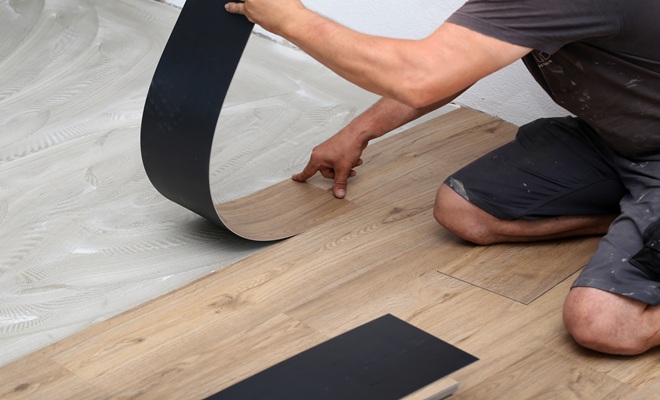
Click LVT, which is a clever tongue-and-groove locking system, is far easier to install and, as such, is more DIY-friendly, although it can be slightly more expensive per square metre. Loose lay LVT is generally the fastest to install and does not require any adhesives, but it is less commonly available and usually more costly.
Room size will play quite a large role in the cost of your overall project. Of course, the more floor area you have to cover, the more expensive both labour and supply will be; however, you tend to get the material at a better price when you purchase more of it.
For example, covering a small bathroom of 10m2 might cost £300 to £700, whereas a large living room of 30m2 could set you back between £900 and £2,100, depending on materials and labour.
The condition of your floor can add more money to your project, as there will be some additional costs to consider. Uneven or damaged subfloor will require levelling before the LVT can be laid, which would lead to preparation work costing anywhere from £100 to £300.
The location of your home will also affect pricing, as tradespeople in London and the South East typically charge more than those in the North or Midlands due to the cost of living and higher demand for tradespeople.
Labour costs will depend on whether the tradesperson charges by the hour, day, or per square metre. On average, you can expect to pay between £150 and £250 per day, or £10 to £30 per m2 for labour alone.
LVT Flooring Prices Table
| Type of LVT | Supply Cost | Installation Cost | 10m2 | 20m2 | 30m2 |
|---|---|---|---|---|---|
| Dryback | £10–£25 | £15–£30 | £250–£550 | £500–£1,100 | £750–£1,650 |
| Click | £15–£35 | £10–£25 | £250–£600 | £500–£1,200 | £750–£1,800 |
| Loose Lay | £20–£40 | £10–£20 | £300–£600 | £600–£1,200 | £900–£1,800 |
* cost per m2
For example, a homeowner choosing Click LVT for a 20m2 kitchen may spend £700 to £1,200 in total, factoring in both supply and labour. For a high-end Loose Lay LVT installation in a 30m2 open-plan living space, the price may rise to £1,800 or more.
Additional Costs
Away from the basic supply and installation costs, there are quite a few common additional costs that crop up throughout an LVT flooring project, and you should factor them into your budget.
The first common extra cost is the subfloor preparation that we have mentioned a few times already. If your existing floor is uneven or damaged, you will need to have it levelled before the LVT flooring can be installed at a cost of between £100 and £300, depending on the size, shape and condition of the floor.
Another cost to consider is the removal of old flooring. It is more than likely that you will have existing flooring to remove before the new LVT flooring can be installed.
The cost for removing flooring like carpet, laminate, vinyl and tiles will be in the region of £100 and £200, depending on the type and size of the flooring. In some cases, waste disposal fees can add £50 to £100 on top of that.
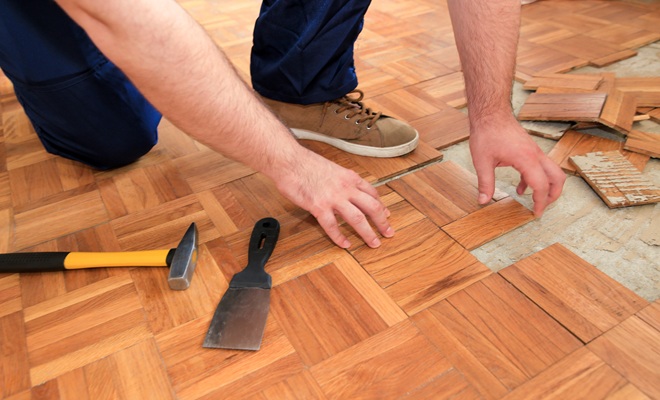
Some types of LVT, such as Click systems, require underlay to cushion the floor and provide sound insulation, with underlay typically costing £3 to £10 per m2.
You may also need to purchase new skirting boards or beading for a clean finish, which can cost £5 to £15 per metre. Finally, threshold strips are usually required where flooring meets at doorways or transitions between rooms, with prices ranging from £10 to £30 per strip.
If you plan on installing LVT flooring in kitchens or bathrooms, a moisture barrier is highly recommended to prevent water damage beneath the floor. Moisture barriers are relatively inexpensive, costing £5 to £10 per m2, but they provide crucial protection and can help preserve your LVT investment.
Cost Breakdown Calculator
In order to give you a clearer view of what a typical LVT flooring project may look like in a pricing sense, we’ve pulled together a cost breakdown here.
Assuming you are purchasing Click LVT at £25 per m2, this will bring your material cost to £500. From here, you will need underlay and a few threshold strips, totalling around £100 in additional supplies.
The labour itself will cost approximately £400 for installation, assuming a 2-day job at £200 per day. Finally, you may need to factor in another £100 for subfloor preparation or waste removal.
This brings the estimated total to £1,100, broken down as follows:
Materials (LVT, underlay, accessories)
£500
Labour (2 days)
£400
Additional costs (prep, removal)
£200
Labour Costs and Time Frames
Now that we’ve covered the supply-only costs and additional costs, let's take a closer look at the labour impact.
A professional floor fitter will charge between £10 and £30 per m2 or £150 to £250 per day, depending on their experience and the complexity of the project.
Now, the time it takes for a job to be completed will vary based on the size of the room, the type of LVT that is being installed and whether there is a requirement for preparation work.
For a small room of 10m2, the installation can be rapid; in fact, it may only take a single day to complete a room of this size. For medium-sized rooms at around 20m2, you would expect it to take between one and two days, with rooms of 30m2 or more taking three days or more.
Loose lay LVT tends to be the fastest to install, followed by Click systems, with Dryback LVT generally taking longer due to the adhesive curing time and the need for precise alignment.
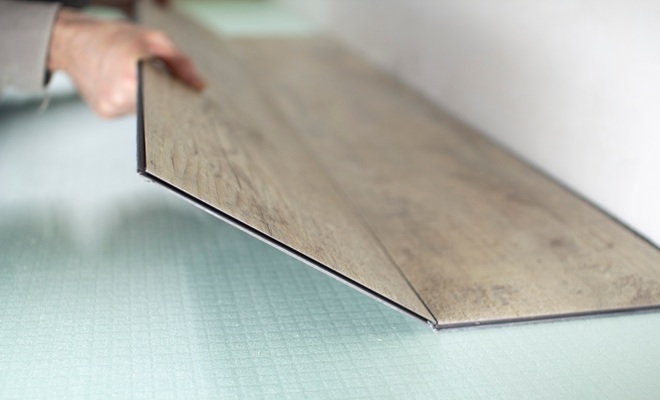
If you are attempting this job as a DIY project, it will be a lot more time-consuming than if you get a professional in. A professional flooring installer will lay around 15 m² in a day, whereas a DIY’er will be lucky to manage 5m2, depending on their skill level and the tools they have.
For DIYers, the process can be significantly more time-consuming. While a professional might lay 15m2 in a day, a DIY enthusiast may only manage 5–10m2, depending on their skill level and tools.
Types of LVT Flooring
There are three main types of LVT flooring: Dryback (Glue Down), Click, and Loose Lay.
Dryback LVT will be applied directly to the subfloor with a strong adhesive, which is why it is considered to be one of the more affordable options at between £10 and £25 per m2. However, it will require professional fitting as it needs to be very precise, and specialist tools may be required.
People opt for Dryback LVT mainly for the secure bond to the subfloor and the durability, making it ideal for high-traffic areas like hallways.
Click LVT is designed with a tongue and groove locking system, which makes it easier to install without adhesive. This type of LVT costs around £15 to £35 per m2 for materials, and it's a very popular choice among DIYers. Perfect for lounges and bedrooms, the simplicity of installation helps reduce labour costs, and the finish is often just as attractive as more expensive options.

Loose lay LVT is a newer product that uses friction and weight to stay in place without adhesives or locking systems. It’s particularly easy and fast to install, though it does tend to be more expensive at £20 to £40 per m2.
Loose lay is perfect for temporary installations as it can be lifted and reused with minimal effort. However, it requires a very clean and flat subfloor, and it's not suitable for all environments.
DIY vs Professional Installation
Of course, everyone wants to save as much money as they can, especially on things that can be done as a DIY project. However, it is important to remember that you are not just paying for labour. Instead, you’re paying for expertise, skill and sometimes, access to specialist tools.

As we have mentioned, Click and Loose Lay LVT are the easiest to install options. To do so, you will need a good utility knife, spacers and a straight edge as an absolute minimum. From here, careful planning is essential, along with allowing yourself a lot of time to complete the job.
Common DIY mistakes include failing to acclimate the tiles, laying over uneven floors, or poor cutting around edges and obstacles, so bear these in mind throughout.
It is incredibly difficult to install Dryback LVT without experience in doing so. The introduction of a very strong adhesive, a requirement for precision installation, and sometimes rolling tools, makes this a real DIY nightmare.
Compliance and Regulations
Typically, there are not that many compliance or regulatory issues to worry about with flooring. However, LVT flooring used in domestic environments must meet fire safety standards like BS EN 13501, which classifies the material’s fire resistance.
A professional will be able to guide you around this regulation to ensure you are both compliant and safe.
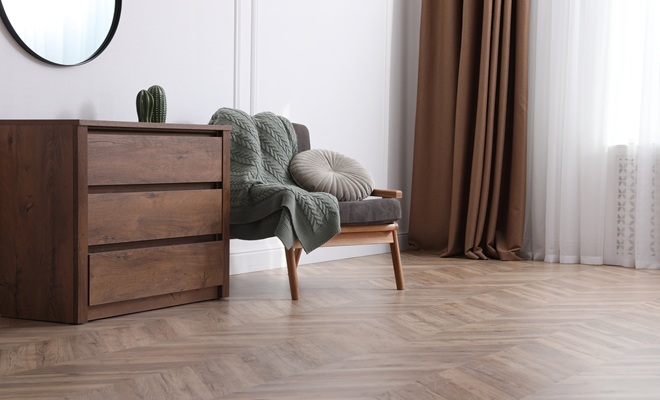
It’s also worth noting that many LVT manufacturers require professional installation in order for the product warranty to remain valid. If you choose to install the floor yourself, make sure you follow all manufacturer guidelines to avoid voiding the warranty - this may crop up if you ever need to make a claim.
Cost of Removing LVT Flooring
Of course, there will usually be a requirement to remove LVT flooring, either for an upgrade or if it has become damaged. The cost of removal depends on the type of LVT and whether you choose to do it yourself or hire a professional.
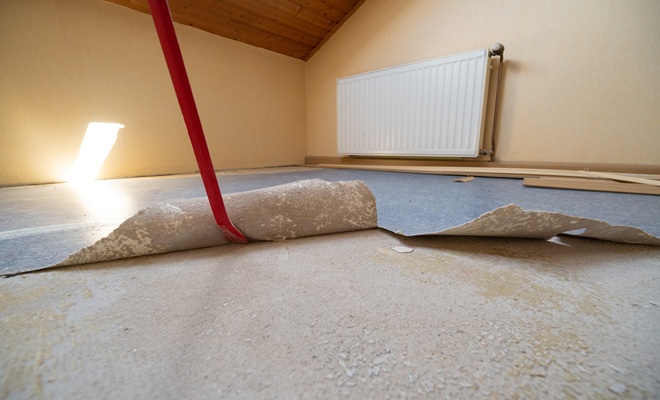
For this, DIY removal is very possible for Click and Loose Lay LVT, as they can be lifted without much issue. However, as with installation, Dryback LVT poses some issues for removal due to how strong the bond is to the subfloor.
For this, you might want to hire a professional, with costs typically ranging between £100 and £200.
FAQs
Finding and Hiring a Professional
When it comes to hiring a flooring specialist, the first thing you should ask for is previous examples of work.
From here, you should also make sure that the tradesperson has experience with your specific type of LVT and is comfortable handling any subfloor preparation that might be required.
You should always get at least three different written quotes to ensure that you are getting the best price and value.
Make sure you are clear of what is included in the quote provided, such as waste removal and subfloor prep. Reputable fitters often belong to professional organisations like the NICF, which provides added assurance of quality and experience.









